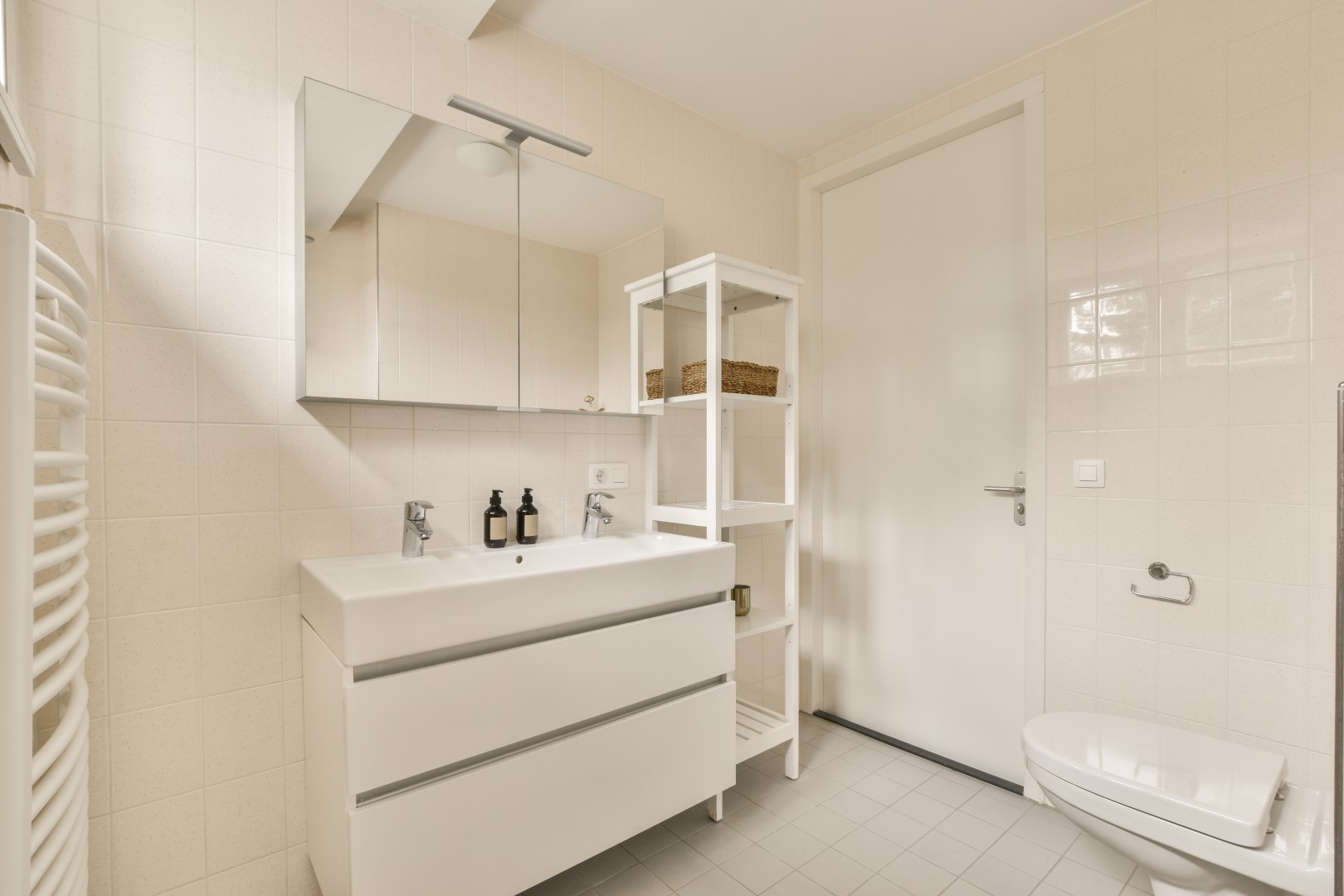Starting a project involving cutting granite for kitchen countertops can be daunting, but with the right tools and techniques, you can achieve a professional finish.
This guide will walk you through each step of the process, ensuring that your DIY endeavor in cutting granite results in beautifully crafted countertops.
Preparing to Cut Your Granite Countertop
Before you begin cutting granite for your kitchen countertops, it’s crucial to decide whether to cut wet or dry. Granite can be cut wet, which minimizes the risk of dust. Setting up a stable work surface and covering the cut line with tape to reduce chipping are important preparatory steps.
Assess the Scope: Professional Help or DIY?
When considering the cutting of granite for kitchen countertops, evaluate the complexity of the job. Factors such as the size of the slab, the intricacy of the desired cuts, and your own skill level with power tools should influence your decision to seek professional help or undertake the task yourself.
Professional services come with expertise in handling granite cutting, minimizing the chance of errors. Also, if the project involves complex shapes, such as curves or detailed sink cutouts, professionals have specialized equipment designed for precision.
When to Consider a Professional for Cutting Granite
If your project involves large slabs or complex cuts, it’s best to consider hiring a professional. The precision required for cutting granite, especially for elaborate kitchen countertops, can be beyond the scope of DIY methods. Professionals have the right tools and experience to ensure a flawless finish.
Situations Suited for DIY Granite Cutting
DIY granite cutting is well-suited for smaller projects or when straightforward cuts are needed. If you’re comfortable using a circular saw with a diamond-cut blade and other tools like polishers and drills, and you’re making simple straight or 2-inch kerf cuts, you can manage the task yourself.
For those who are experienced with power tools and have a clear understanding of the cutting process, this can be a cost-effective approach. Additionally, DIY cutting allows for a more hands-on, personalized touch to your kitchen countertops.
Safety Measures for Handling Granite
Before starting your granite cutting project, it’s imperative to prioritize safety and ensure you’re properly equipped to handle the material and tools.
Essential Safety Gear
- Wear protective gear, including a dust mask, safety glasses, and ear plugs.
- A face shield is recommended for additional protection.
- Wear gloves to protect your hands from sharp edges and debris.
Setup and Workspace Considerations
- Ensure you have a stable work surface to securely hold the granite slab during cutting.
- Validate that the straightedge makes a 90-degree angle for precise measurements and cuts.
Properly preparing your workspace and having the right setup are key to successful granite cutting. It’s essential to have a clear and stable area to work in, reducing the risk of mistakes and potential hazards.
Cutting Techniques for Granite Countertops
Choosing the right cutting techniques for granite countertops is critical to achieving a smooth and accurate finish.
Measuring and Marking for Precision
Accurate measurements and clear marking are the foundation of a successful cut. Take your time to measure twice and mark once, ensuring that your cuts will be precise and that your countertop will fit perfectly in its designated space.
Tools for Accurate Measurements
- Tape measure for determining the length and width of the cut.
- Carpenter’s square for ensuring right angles.
- Marking tools, such as a pencil or chalk, for visible lines.
Tips on Marking the Cut Line
When marking the cut line on your granite countertop, use a non-permanent marker for visibility. Apply tape along the edge of the mark to protect the surface and reduce chipping. Remember, precise marks lead to precise cuts, so take your time and be thorough.
For plunge cuts and shaping around the corner of the granite slab, consider using a template as a guide. This will help you maintain the integrity of the marks on the cut line and ensure a clean edge. If the granite will accommodate a sink, ensure your measurements account for the sink location and that holes are drilled precisely.
The Cutting Process Explained
The cutting process of a granite countertop involves various stages, from the initial cut to the final touches. Understanding each step is crucial for a successful outcome.
Using a Circular Saw for the Main Cut
For the main cut, using the best-corded circular saw with a diamond blade ensures a steady power supply and consistent cutting speed. Keep the blade wet to reduce dust and heat, and proceed slowly to maintain control and precision.
Employing Smaller Tools for Detailed Work
Once the primary cut is made with a circular saw, smaller tools come into play for detailed work. To create precise contours or to drill holes for sinks and faucets, a power drill with diamond-tipped bits is essential. Drilling should be done carefully to prevent cracks, and water should be used to minimize heat and dust.
For finishing touches, a putty knife can be useful for applying sealant or for smoothing filler in any gaps. A pry bar might be needed to adjust the slab or to help with fitting the countertop in place. Remember, detailed work requires patience and a steady hand to ensure a professional-looking finish.
Finalizing and Installing Your Granite Countertop
After cutting and detailing, you’re ready to finalize and install your granite countertop, ensuring it’s beautifully showcased in your kitchen or bathroom.
Polishing and Finishing the Edges
Polishing the edges of your granite countertop gives it a smooth, finished look. It’s important to choose the correct polishing pads and to proceed gradually from coarser grit to finer grit for a gleaming edge.
Selecting the Right Polishing Tools
For a well-polished edge, invest in a set of diamond polishing pads with varying grit levels. The sequence typically starts with a coarser grit pad and moves up to a finer grit to achieve a high shine. Additionally, a wet polisher is recommended for better results and to reduce the dust cloud generated during polishing.
Step-by-Step Polishing Instructions
Begin by attaching a coarse-grit diamond pad to your wet polisher. Apply water to the edge to prevent dust formation and to keep the pad cool. Move the polisher steadily along the edge, being consistent with pressure and speed to avoid dips or gouges. Rinse the edge and pad frequently to clear off granite residue.
Progress through the grit levels of the polishing pads, from coarse to fine, ensuring each edge has been evenly smoothed before switching pads. The final pass with the finest grit pad will bring out the granite’s natural shine. Wipe down the edge with a damp cloth to remove any remaining dust before installing.
Ensuring Proper Installation
Proper installation is crucial for the longevity and appearance of your granite countertop, ensuring it remains secure and stunning.
Securing the Granite in Place
To secure your granite countertop, apply a bead of silicone adhesive along the top edges of the base cabinets. Carefully lower the granite into place, ensuring it aligns properly with the cabinets and walls.
Apply pressure along the surface to adhere it firmly. Allow the adhesive to cure for the time specified by the manufacturer before fully using the countertop.
Sealing and Maintenance for Longevity
Once installed, seal the granite to protect against stains and spills. Apply an even coat of sealant with a soft cloth, and use a putty knife to remove excess from edges or seams.
Regular maintenance includes wiping spills quickly, avoiding abrasive cleaners, and reapplying sealant as recommended by the manufacturer to keep your granite countertop in peak condition.
Common Pitfalls and How to Avoid Them
A common pitfall is underestimating the difficulty of cutting granite, which can lead to jagged edges or breakage. To avoid this, use a diamond blade and follow a steady, guided cut, ensuring your blade is always wet to reduce friction and the chance of cracking.
Another pitfall is improper sealing, which can leave your granite vulnerable to stains. Prevent this by applying a high-quality sealant and following the manufacturer’s instructions for application and drying time. Regular resealing will help maintain the barrier against potential stains and damage.
Final Thoughts
With the right tools, techniques, and attention to detail, you can cut and install a granite countertop that enhances the beauty and value of your home. But to prevent having to stop in the middle of a project, a careful assessment of the work to be done is always necessary.
You have to ensure that this is something that can be done without professional tools and experience. If you are unsure, it’s best to err on the side of caution and call a professional, as getting stuck mid-way can cause damage and be more expensive to repair.
Remember, you should always prioritize safety and proper maintenance to enjoy your handiwork for years to come.
Discover more from Futurist Architecture
Subscribe to get the latest posts sent to your email.



